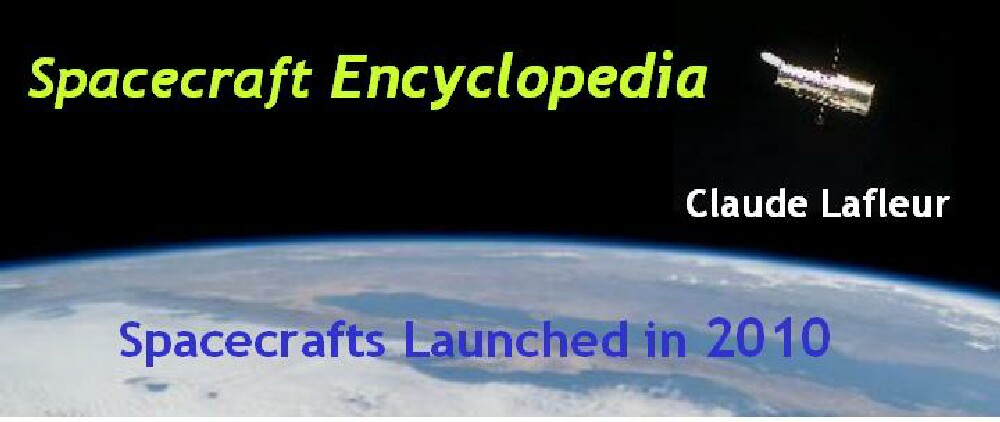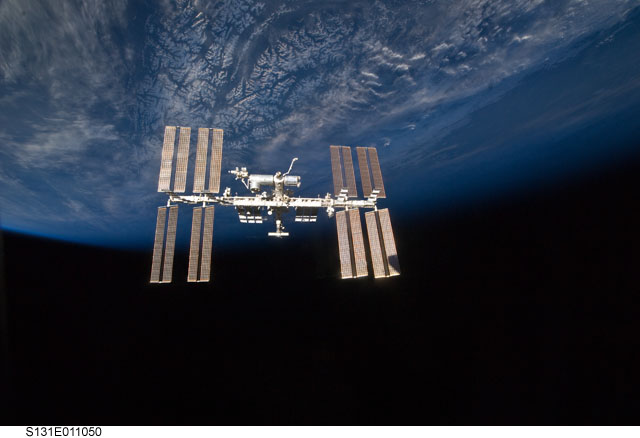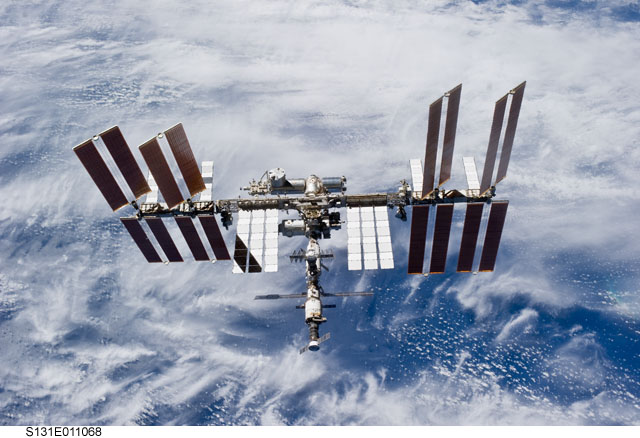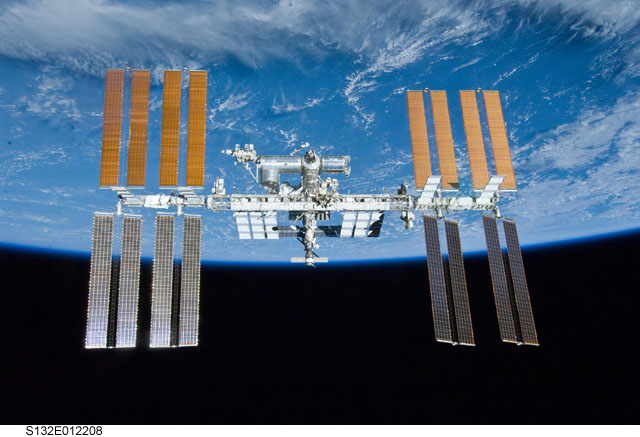Chang'e 2
| Spacecraft: |
Chang'e is named after a mythical
Chinese goddess who flew to the Moon. |
| Chronologies: |
2010 payload #79 ; 2010-50A ; 6,933th spacecraft. |
| Type: |
Planetary Probe (Moon) |
| Families: |
|
| Ranks: |
|
| Sponsor: |
China |
|
 |
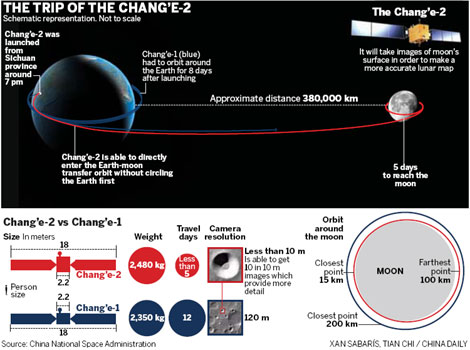
Credit: China
Daily

Maps of the Moon made from Chang'e observations.
(Source:
Xinhua)
| Launch: |
1 October 2010 at 11h00 UT, from
Xichang Satellite Launch Center, by a Chang
Zheng 3C. |
| Orbit: |
Initial Earth orbit: 200 km x 380,000 km
Initial Lunar orbit: 119 km x 8,599 km
Solar orbit (2012): 1.02 AU x 1.03 AU x 0.2° |
| Mission: |
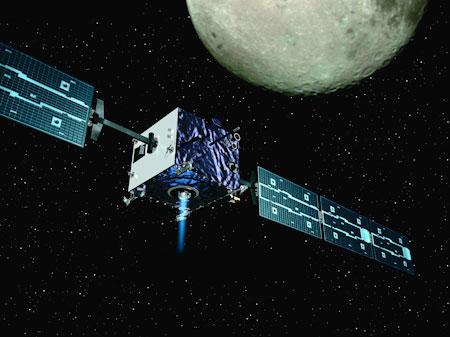 Chang'e
2 is a 2,480-kg lunar-lunar probe, the second Chinese planetary mission.
It enters lunar orbit on 6 October 2010 to test key technology involved
in a soft-landing (Chang'e-3).
The probe was designed to observe the Moon for at least six months, but
it carries enough fuel to operate much longer. From a lunar elliptical
orbit with the closest point only 15 km, it took high-resolution photos
of the Bay of Rainbows area, the expected landing site of Chang'e-3. Chang'e
2 is a 2,480-kg lunar-lunar probe, the second Chinese planetary mission.
It enters lunar orbit on 6 October 2010 to test key technology involved
in a soft-landing (Chang'e-3).
The probe was designed to observe the Moon for at least six months, but
it carries enough fuel to operate much longer. From a lunar elliptical
orbit with the closest point only 15 km, it took high-resolution photos
of the Bay of Rainbows area, the expected landing site of Chang'e-3.
The $134 million
spacecraft was first built as a ground spare for Chang'
e 1, in case that mission ran into problems. Instead of building
a new probe, China bolted improved science instruments and cameras on the
spare and launched it on a more powerful rocket. Chang’e-2 was launched
on the 61st anniversary of Communist rule there, but spokesmen denied that
the launch time was chosen to mark the National Day, saying the launch
date was purely coincidental and determined by other factors.
By 1 April 2011,
Chang'e-2 has been operating for 180 days in lunar orbit and has reached
its six-month designed life. Its system status was normal and stable, and
the craft had fully realized its mission.
Change'-2 photos of the Bay of Rainbows
area, the expected landing site of Chang'e-3.
ISource: Xinhua)
In fact, this date
marks the end of Chang'e-2's primary mission. It was reported that: “Orbiting
around the moon for six months already, the Chang'e-2 has completed its
mission to scout potential landing sites for Chinese spacecraft.”
Five potential landing spots were found. The fate of Chang'e-2 has not
been determined yet, but the probe is continuing its Moon observation mission.
It was also reported that: "The spacecraft is sufficiently-stocked of fuel,
which will enable it to further survey the Moon for one or two more years.
It might even fly beyond its trajectory to the outer space."
Thus, after completing
its 6-month observation of the Moon – mainly to take high-resolution photos
of the Sinus Iridum (Bay of Rainbows), one of the five proposed landing
sites for Chang' e-3 -, project managers were studying three possible follow-up
missions: crashing Chang’e-2 into the Moon, returning it to Earth or flying
off the probe into outer space.
As of 23 May 2011,
it was reported that the lunar orbiter had finished two additional tasks:
had taken photos of the northern and southern poles of the Moon, and had
descended to about 15 km of the lunar surface to snap high-resolution images
of the Sinus Iridum.Then, on 9 June 2011, Chang’e-2 departed from the Moon
for outer space. It was the first time that a probe set off from the Moon
to go to remote outer space. Scientists were then hoping that Chang’e-2
can continue operations until the end of 2013.
After traveling
77 days away from the Moon, it went into the Lagrange-2
point in space, at some 1.5 million km from Earth. It arrived there by
30 August 2011. From there, Chang'e-2 sent back data obtained by a gamma-ray
spectrometer, high-energy solar particle detector and solar wind ion detector.
As cheduled, the probe spent one year at L2 to carry out scientific experiments
and gather information on the surrounding environment.
On 13 December 2012,
Chang'e-2 made the flyby of asteroid Toutatis, about seven million km away
from Earth. It came as close as 3.2 km from the minor planet and
took pictures at a relative velocity of 10.73 km per secon. The flyby was
the first time a spacecraft has taken such a close view of the asteroid.
During 2013, Chang’e-2 traveled
up to 20 million km from the Earth, and than up to 50 million km.
This extended mission have tested China's tracking and control network.
By early 2014, the probe has traveled more than 70 million km into deep
space and was still in good condition. It is the longest voyage of
a Chinese planetary probe. Chang'e-2 is expected to travel as far as 300
million km from Earth, after which it will return to perigee of about 7
million km around 2029.
Chinese media reports
that Chang'e 2 was 100 million kilometres into deep space in July 2014,
the longest journey of any Chinese spacecraft. “The lunar probe has extended
its service by several years and remains in good condition,” it was reported. |
| Source: |
Jonathan
Space Report No. 633,
672
;
Spacewarn No. 684
; Spaceflight Now's 2
Oct 10, 4
Oct 10 , 6
Oct 10, 17
Dec 12 ; China Daily's 29
Sep 10, 29
Sep 10, 1
Oct 10, 1
Oct 10, 1
Oct 10, 1
Oct 10, 2
Oct 10, 2
Oct 10, 6
Oct 10, 9
Oct 10, 9
Nov 2010, 2
Apr 11, 15
Dec 12 ; Xinhua's 29
Sep 10, 29
Sep 10, 30
Sep 10, 1
Oct 10, 1
Oct 10, 1
Oct 10, 1
Oct 10, 1
Oct 10, 2
Oct 10, 2
Oct 10, 3
Oct 10, 6
Oct 10, 6
Oct 10, 8
Oct 10, 13
Oct 10, 8
Nov 10, 8
Nov 10, 23
Nov 10, 20
Dec 10, 20
Dec 10, 20
Dec 10, 1
Apr 11, 2
Apr 11, 9
Jun 11, 27
Aug 11, 30
Aug 11, 21
Sep 11, 21
Sep 11, 6
Feb 12, 6
Feb 12, 7
Feb 12, 13
Mar 12, 15
Dec 12,14
Feb 14, 30
Oct 14 ; |
|
|
